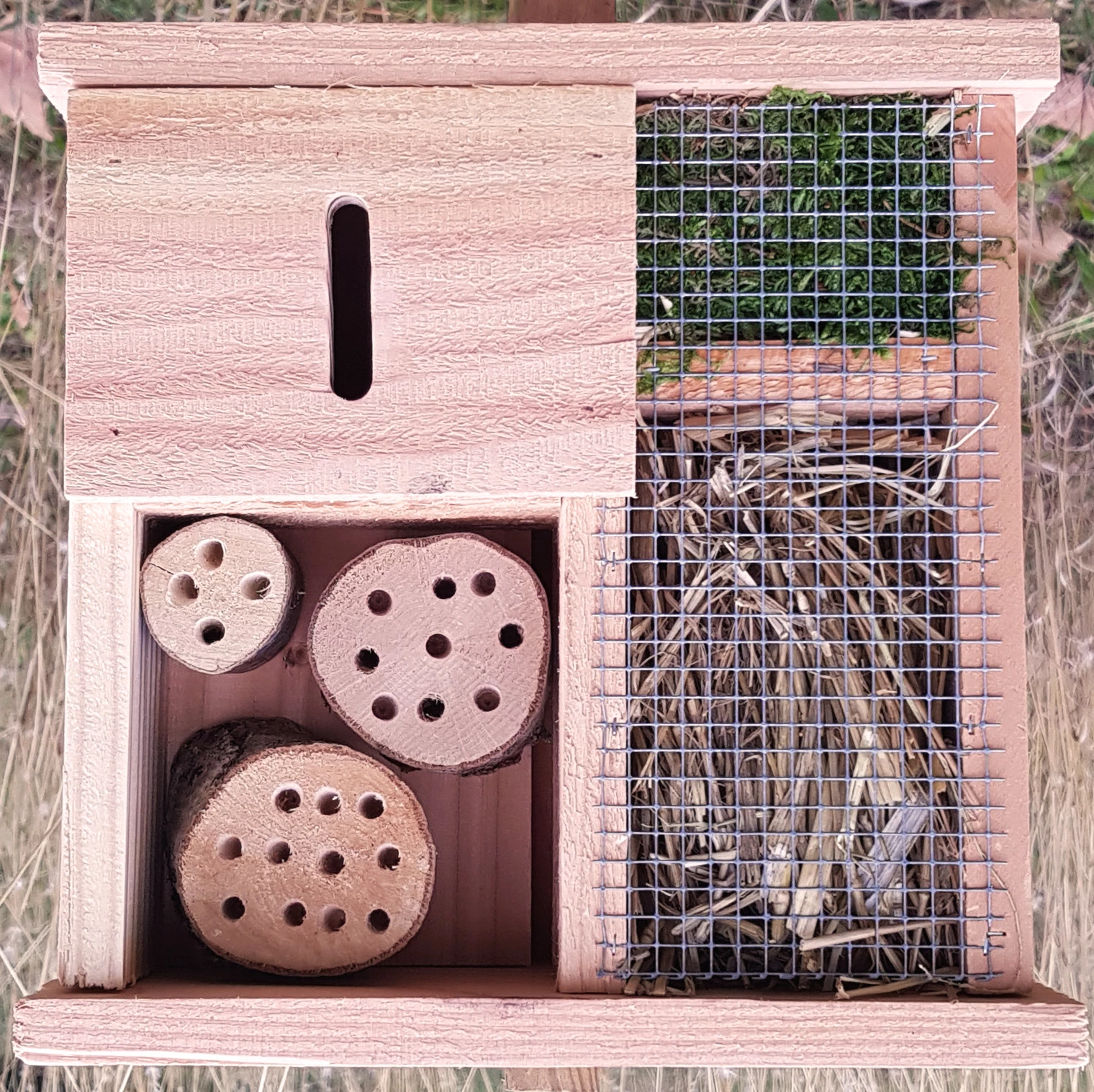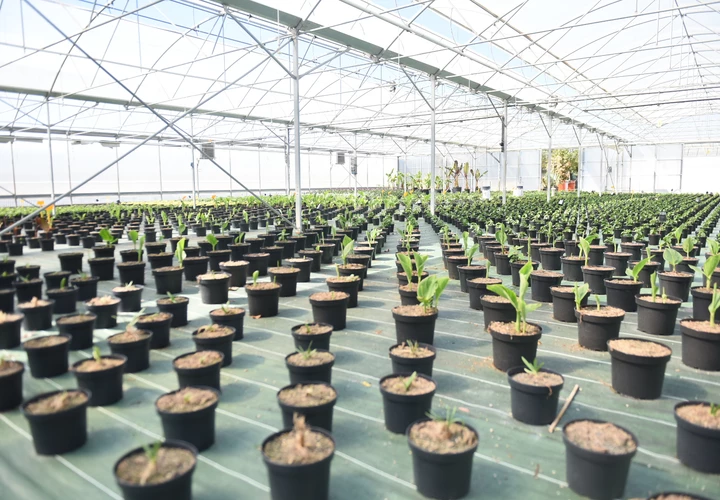The pollinator cube
What is the pollinator cube?

The pollinator cube is a wooden device measuring 24 cm square and 9 cm deep. It is divided into 4 compartments, each with its own particularity to optimize the reception of different species.
Installing a pollinator cube on your balcony or terrace, close to plants, helps to preserve certain species of pollinator insects. This pollinator cube must be placed exclusively on your balcony or terrace and close to plants.
65 devices are distributed per season.
In brief
What the city does:
- Donation of a pollinator cube
- Awarded in autumn
Installation and maintenance requirements:
- Come and collect the cube
- Install the cube on your balcony or planted terrace
How to install it and optimize the chances of it being occupied
- Install your pollinator cube on your balcony or terrace
- Install your cube at least 30 cm above the ground to protect it from humidity
- Orient the front face to the south or southeast, in the sun and sheltered from wind and rain
- Install your cube near diverse, local plants rich in pollen and nectar and if possible a watering hole (a simple dish may suffice, as long as you renew the water regularly to avoid mosquito development)
- Don't paint it, but you can use natural products like linseed oil to protect it from the elements
- Don't use insecticides on your balcony or terrace
To find out if the device is occupied, observe your cube:
- Some species block the entrance holes of the tunnels in which they have laid eggs
- Observation of the coming and going of insects nearby will also be indicative of an insect presence
You can participate in the Photographic monitoring of pollinating insects (Spipoll). A participatory science project initiated in 2010. Created by the Muséum national d'histoire naturelle and the Office pour les insectes et leur environnement (Opie), Spipoll aims to obtain data on pollinating insects.
In the world, around 90% of flowering plants depend in part on pollination and therefore reproduction by insects, and it's estimated that 35% of what we eat is linked to the action of pollinators.
Among effective pollinators:
- 34% are Diptera (flies),
- 31% are Hymenoptera (bees and wasps),
- 12% are Coleoptera (beetles),
- 11% are Lepidoptera (butterflies).
- Spiders, hemipterans (bugs) and others share the remaining 12%.
In France, there are almost 1,000 species of wild bees and bumblebees.
Good to know
The cottages are made of Morvan Douglas fir, a sustainable, high-quality wood from the forests of the MORVAN Regional Nature Park, sustainably managed. The wood is PEFC (Programme for the Endorsement of Forest Certification schemes) certified.
It is then processed in a sawmill located within the Parc Naturel Régional. Assembly takes place at the ESAT du MORVAN (Etablissement et Service d'Aide par le Travail).
Where and when to remove your pollinator cube?
The registration period runs each year from January 1 to June 30. Revegetation vouchers are distributed in November.
Climate issues are forcing us to be vigilant about water consumption and to choose the best planting period. The city of Montpellier has therefore decided to extend the vegetation voucher to one season/year.
If your application is accepted, your pollinator cube is to be collected from the Centre Horticole municipal:

Serres municipales - Centre horticole
Moving house?
Please notify the Nature Agroecology and Landscape Department by phone or e-mail: 04 67 20 99 00 / dnap@montpellier.fr
